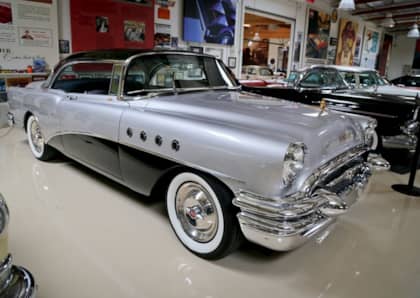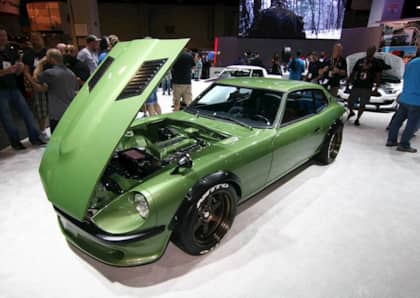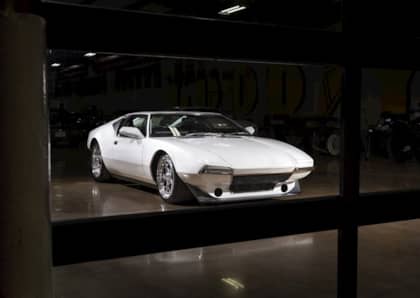Not Just an Econobox: Here's Why the Ford Festiva is a Cool Car
If you were to imagine the terms "econocar," "penalty box," "tin can" or other more colorful words used to describe small and cheap commuter cars, the 1986-1993 Ford Festiva might be the first image that pops into your head.
When it was new the Festiva was one of the cheapest cars you could buy in America, designed to be affordable and fuel efficient above all else. It offered virtually nothing in the way of creature comforts, had an ultra simple boxy shape and was powered by a 1.3 liter SOHC four-cylinder engine that made tire-smoking 63 horsepower.

In other words, the Festiva seemingly offered very little to car enthusiasts, and in America it was marketed to those who wanted a cheap car at all costs, and not those looking for something fun or exciting to drive.

But despite its humble roots, the tiny little Festiva has always enjoyed a bit of a cult enthusiast following, and especially now that it's old enough to have disappeared from daily driver duty, the simple but somehow charming Ford Festiva is car that's worth enthusiast attention. Here are some reasons why.
It's Extremely Light
In a time where a "lightweight" car comes in at 3,000 pounds and an "extremely lightweight" car is around 2,500 pounds, the Ford Festiva's roughly 1,700 pound curb was light even by the standards of its time and it's just plain absurd by modern standards.

Not only does this lack of mass make the car extremely agile, but you don't need much horsepower at all for the Festiva to feel quick—but we'll get to that in just a moment.

Of course the downside to the Festiva's light weight is that we would not recommend crashing one into a heavy, modern vehicle because the results will not be pretty.
Global Roots
Despite its Ford branding, the Festiva was actually developed by Mazda in Japan under Ford's request, as Ford controlled Mazda at the time.

The cars imported to the US, however, were actually built in South Korea under partnership with Kia, who also sold a version of the car in South Korea called the Kia Pride.

As the product of a global partnership, the Festiva is part American, part Japanese and part Korean, and in overseas markets, like Japan, the car was offered as more than just a bare bones economy vehicle.
Engine Swap Potential
While its factory equipped engine was rather gutless, the Festiva's light weight means you don't actually need a whole lot of power to have fun.

And thanks to the Festiva's Mazda underpinnings there are plenty of engine swap options. In fact, the Festiva's engine comes from Mazda's extensive B-family of four cylinder motors which includes twin cam and turbocharged variants.

The twin cam B6 and BP engines are especially well known and proven thanks to their use in the 1990-2005 Mazda Miata, and while their power outputs have never lit one's pants on fire, either one is putting out over double the power of the Festiva's stock engine, and these larger more rev happy engines are a popular and affordable transplant.
The JDM Factor?
Interestingly enough, while the Festiva was developed by Mazda and sold in certain markets as the Mazda 121, in the Japanese home market it was built locally but sold and marketed as the Ford Festiva.

There it competed against other small cars from Japanese automakers. Unlike the American market, the JDM Ford Festiva was offered in several different variants including a model with a canvas top.

The really cool version was the Festiva GTA and GT-X models which had a DOHC 1.3 liter engine that revved to 7,000 RPM.

Although never as popular as simlarly sized rivals from Honda or Toyota, the Festiva still found itself in the hands of Japanese enthusiasts who enjoyed the cars on the country's technical race circuits and tight winding roads.

Perhaps coolest of all is a unique front end available for the JDM Festiva that brings to mind both the Ford RS200 and the Alfa Romeo GTA. How awesome would it be to swap one of these onto a US market Festiva?
SHOGun!
Last, but not least, we get to the fastest and most well known version of the Ford Festiva ever made—the SHOGun.

Using a widened version of the Festiva body, the SHOGun is powered by a 3.0 liter Yamaha-tuned V6 engine from the Taurus SHO, mounted behind the driver and driving the rear wheels.

Jay Leno is a proud owner of one of the handful of official SHOGuns built, and while it's certainly not a weekend project, some bold Festiva owners have actually built their own homemade versions using junkyard parts.
And speaking of the Taurus SHO, you can check out our retrospective right here to learn why the SHO is one of the greatest factory sleepers ever built.











